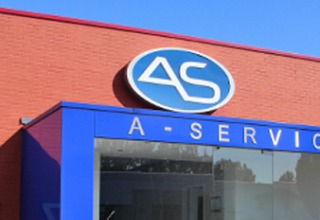MODULAR PALLET TRANSFER SYSTEMS we opt for decentralised control
Have you read this article, then you know what the advantages and disadvantages are of centralised and decentralised control of modular pallet transfer systems and what is required of a good system.
As a supplier of complete automatic loading and unloading systems for trucks, we prefer to not only deliver mobile loading and unloading systems, but also the semi-trailer and the intralogistical connection. The latter being the subject of this knowledge document.
An intralogistical connection is the connection between the end of the production line and the automatic loading system on one side and the connection between the automatic unloading system and the automatic high bay warehouse on the other. In other words, turn key systems that can transfer pallets from the end of a production line to a high bay warehouse.
Intralogistics may include roller conveyors, chain conveyors, conveyor transfer units, turning stations, shuttles and lifts. Traditionally, these systems are centrally controlled. The control unit being installed in a cabinet in a separate technical room. This is an acceptable solution if you are sure that little will change in the future.
However, the market increasingly demands greater flexibility. Products have an increasingly shorter lifecycle. Contracts between producers and logistics providers are also become shorter. It is important to be able to respond to this trend. The major disadvantage of a centrally controlled system is that any expansion will have significant consequences. The costs involved are also high. It’s not only the software that needs to be modified, cabling needs to be changed, added and extended. In addition, such a system is very location specific, with the result that there is virtually no residual value once the contracts ends.
Benefits of a decentralised approach
That is why we advocate a decentralised approach. Each module receives its own local controller on the machine itself. The modules are linked to each other via connectors. These connectors not only link the control signals but also the necessary power supplies and safety signals. They also create the connection to the main control system. Simply put, the modules are plug-and-play connected to each other.
The main control system is no more than a small system that manages the pallet routing and provides a visual representation to the operators. The latter is mainly utilised to provide a quick overview of a large system.
The greatest advantage of decentralised control is flexibility. Any adjustment to the line is easy to implement. They can be disassembled and put back together to create a new situation. Due to their flexibility, the modules have a much higher residual value. They are much easier to re-use in other projects.
In addition, decentralised control is cheaper. A decentralised control system does require more control components than a centralised one, however significantly less cabling is used, installation costs are many times lower and as the modules are standardised, production costs are lower. This makes automated pallet transfer systems interesting even for short contract periods. Moreover, the modular applicability and standardisation, makes alternative business models like rental and pay per pallet also possible.
Requirements for a good decentralised control system
It is important that a decentralised control system works well under all circumstances. Whether that is constantly freezing conditions or extreme heat. The selection criteria of the components are therefore vitally important.
Security is also an important issue. In the event of a fault, it should be possible to exchange complete modules as easily as changing a light bulb. Downtime due to machine failure can therefore be reduced to almost zero.
Plug & play and flexibility is standard. It should be easy to convert the system to another routing. We therefore decentralise not only the motion control (the muscles), but also the control of the machines (the brain). This makes a main routing system redundant in situations where no choices have to be made in routing. If such a system is required, it is significantly smaller than with a decentralised system.
Do you have any questions, remarks or would you like to know more about our systems? Then please get in touch. We will be happy to discuss this further with you.
email: maas@a-service.nl
telephone: +31 (0)541 521206.


